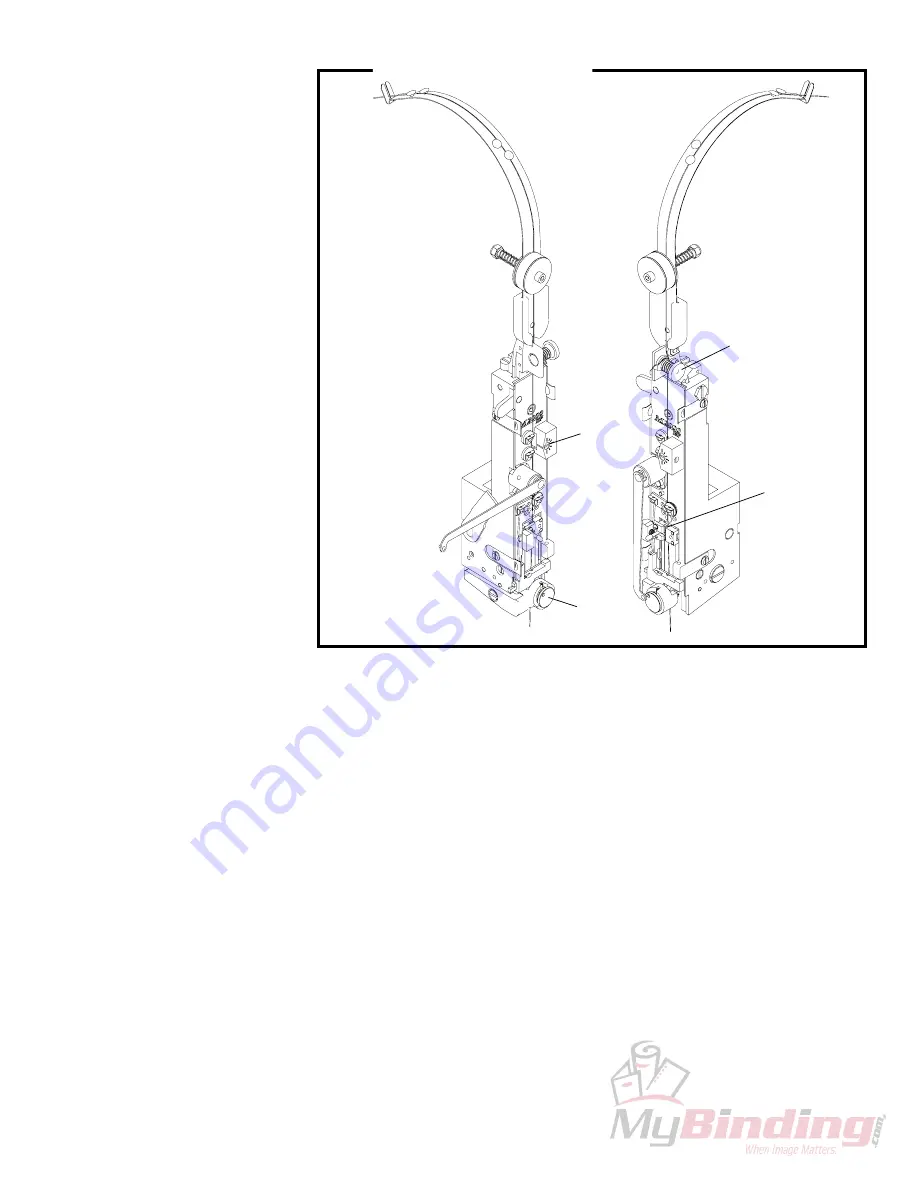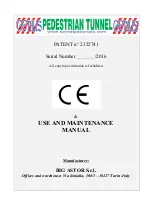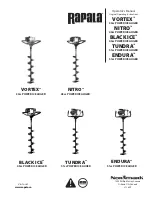
27
insufficient holding force wire
will fall from rotator. Replace
the rotator.
The rotator holder and rotator
operating spring are responsible
for alignment of the wire beneath
the bender bar grooves. The
position of the rotator holder
determines how far the rotator
is pushed forward under the
bender bar by the rotator
operating spring (Index L). A
weak spring will not push the
rotator in far enough and with
this improper alignment the
bender bar will knock the wire
from the rotator or will shear
the wire into pieces. To secure
proper alignment, check the
position of the rotator operating
spring. Make any necessary
adjustment of the rotator holder
or replace the rotator operating
spring if weak.
The wire is fed into the rotator
and held for forming. If the
rotator is dirty, the wire is not
gripped securely enough and drops out. Remove
and clean the rotator. If the edges over which the
wire is formed are sharp, the corners of the stitch
crown will fracture. Remove the rotator and polish
the edges with a fine emery cloth.
To remove, Adjust or Replace the Rotator Holder:
1. Swing the rotator operating spring to the left.
2. Remove the rotator.
3. Loosen the rotator holder screw (Index N).
4. Adjust the rotator holder screw.
5. Re-assemble.
P. Wire Straighteners: (Figure 30)
All coils of stitching wire have a certain amount of
bundle curve. The purpose of a wire straightener
is to remove this curve. There is both an upper
wire straightener (Index A) and a lower wire
straightener (Index B) on all M2000 Model Stitchers.
See "Threading Wire and Adjusting Wire
Straighteners" page 6.
The upper wire straightener should feed wire parallel
to the faceplate. This insures that the wire will
properly enter the rotator and will be aligned with
the grooves in the bender bar. If the wire is not
parallel to the face plate the wire is sheared in the
rotator as the bender bar descends. Adjust the
upper wire straightener.
The lower wire straightener directs the wire straight
down so that it enters the rotator (Index C). If the
wire is not straight enough it hits the rotator and
buckles. Adjust the lower wire straightener so that
the wire points straight down as in figure 30.
Improper straightening of the wire can also cause
the stitch legs to buckle or turn out because they
strike the clincher improperly. Excessive tension
on the wire straightener prevents the grip (Index D)
from feeding the wire smoothly. This causes
variation in leg length.
NOTE:
Check the wire straighteners when changing the
coils to insure the accurate feeding of wire.
Figure 30
(CTTT2605T3 Scene 3, 4)
A
B
C
D
Summary of Contents for ISP BinderyMate 2 305
Page 22: ...19 NOTES...
Page 42: ...39 NOTES...
Page 45: ...42 Section 7 ELECTRICAL ELECTRICAL SCHEMATIC 115 V A C SK828...
















































